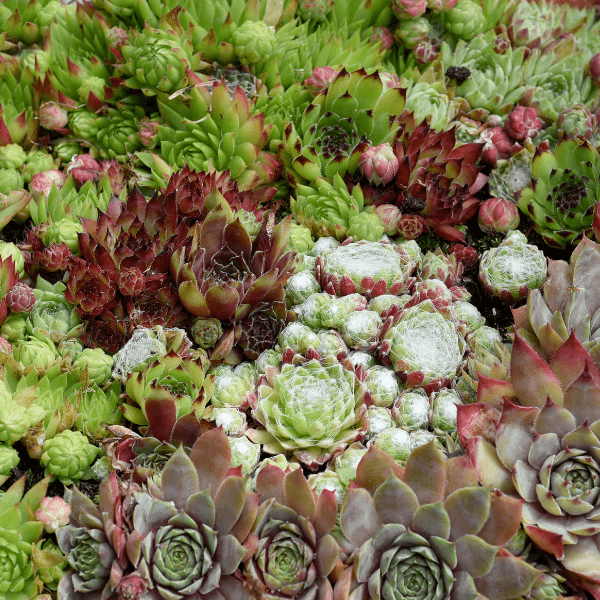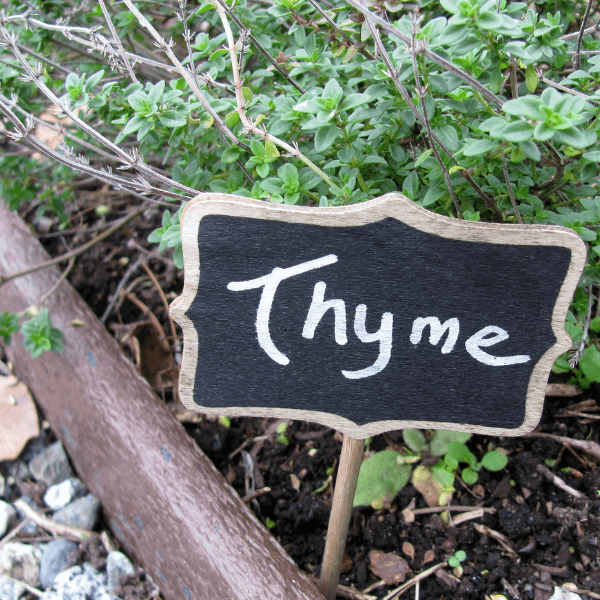A rockery is a beautiful and unique addition to any garden and can be created with the help of St Catharines landscape supply. In this guide, we will show you how to build a rockery that will be the envy of your neighbourhood.
Building a rockery is not as difficult as you might think. With a little bit of planning and preparation, you can create
Do you want to add more garden features? If yes, then is this the sign for you to build rockery?
But first, what is a rockery?
Rockery contains arrangements of different rocks and alpine plants. This feature suits any size of the garden. Rockeries are the focal point of landscaping. The use of rock as garden decoration started long ago and can be traced to the early Japanese and Chinese gardens.
A rockery is a great addition to any landscape. Use it to add height, interest, and texture to your garden. Rockeries can also help control erosion on sloped areas of your property. You can pick up all your materials from your local St Catharines landscape supply.
The rockery is a unique and beautiful way to decorate our garden. The colourful stones and plants around it could make any corner of our yard eye-catching. Also, they are simple to create by yourself. You can do this with your family.
Recreational activities like this are fun and interactive to do. Plus, you're not just making your yard pretty, but you could save lots of money.
So, are you ready to make your rockery? Follow the listed instructions to achieve your ideal rockery in your yard.
Materials Needed
- Paper and other designing stuff
- Rocks of various sizes and shapes
- Garden hose
- Shovel and trowel
- Peat moss, compost mix, and snd
- Landscape fabric
- Sticks
- Strings
- Trowel
- Alpine plants
You can find these materials at any St Catharines landscape supply near you.
Choose your rockery location
The best place to build your rockery should have good drainage. It should also be in an area with at least six hours of sunlight a day. If you have these two things, you're well on your way to creating a beautiful rockery.
Once you've chosen the perfect location, it's time to start planning your landscape design.
Start by sketching out your design on paper. This doesn't have to be perfect - just a rough idea of what you want your rockery to look like. Once you have a general idea, it's time to start gathering your materials.
Pick the right rocks
Without a doubt, choosing the right rocks is one of the most important aspects of creating a beautiful rockery. You'll want to choose rocks of various sizes and shapes to create an interesting and visually appealing design.
If you're unsure where to find rocks, your local St Catharines landscape supply should have a wide selection.
Prepare the area
Once you've gathered your materials, it's time to start preparing the area where you'll be building your rockery. Start by removing any weeds or grass from the area. Then, use a garden hose to outline the shape of your rockery.
Next, dig a trench around the perimeter of your rockery about 6 inches deep. Once you have your trench, line it with landscape fabric. This will help prevent weeds and grass from growing up through your rockery.
Now, it's time to start filling in your rockery. Start by adding a layer of peat moss, then a layer of the compost mix. Next, add a layer of sand. The sand will help drainage and prevent your rocks from shifting.
Start building
Now it's time to start building your rockery. Begin by placing the largest rocks first, then fill in the gaps with smaller rocks. As you're building, be sure to leave gaps for plants.
Once you've finished building your rockery, it's time to add some plants. Alpine plants are a great choice for rockeries because they don't require much maintenance. You can find a wide array from your St Catharines landscape supply. Dig a hole in the sand, add some compost mix, and plant your alpine plant.
1. Sedum
Sedum is a hardy, drought-tolerant plant that comes in various colours. It's a low-maintenance plant that doesn't require much care. To plant sedum in your rockery, dig a hole in the sand and add some compost mix.
2. Sempervivum
Sempervivum is another hardy, drought-tolerant plant that is perfect for rockeries. It's available in various colours and forms and is easy to care for. To plant sempervivum in your rockery, dig a hole in the sand and add some compost mix.
3. Jovibarba
Jovibarba is a genus of plants in the family Crassulaceae. The common English name is houseleek. Plants in this genus are native to Europe and Asia. They are succulent perennials that grow in rosettes.
The leaves are fleshy and often have hairs or spines on them. The flowers are small and borne in clusters.
To plant Jovibarba, choose a well-drained spot in full sun to partial shade. Loosen the soil and dig a hole twice the width and depth of the pot.
Gently remove the plant from its pot and place it in the hole so that the top of the root ball is level with the soil surface.
Backfill with soil and water well. Apply a mulch to help keep the roots cool and moist.
4. Orostachys
Orostachys is a genus of succulent plants in the family Crassulaceae. It contains about 24 species, all native to eastern Asia. The name is derived from the Greek oros meaning "mountain," and Stachys meaning "spike", referring to the inflorescence of some species.
Common English names for Orostachys include mountain jewel orkydium and Roseroot. Plants in this genus are small, evergreen succulents with rosettes of fleshy leaves. They produce cylindrical spikes of small flowers in summer.
Orostachys are easy to grow in well-drained soil from full sun to partial shade. They are tolerant of poor soil and drought. To propagate, divide the offsets or take stem cuttings in spring or summer.
5. Delosperma
Delosperma, also known as ice plants or Trailing Ice Plants, is a genus of flowering plants native to Southern Africa. They are well-suited for planting in rockeries due to their low growth habit and ability to thrive in dry, rocky conditions.
Delosperma can be propagated from seeds or cuttings. To sow seed, surface sow onto a well-drained seed mix and keep moist until germination.
Cuttings can be taken from healthy stems in spring or summer and rooted in a propagator with bottom heat. Once rooted, you can transplant them into the rockery.
6. Helianthemum
The common English name for Helianthemum is rock rose. It is a low-growing, evergreen shrub with small, yellow flowers.
To plant Helianthemum in the rockery, prepare a well-drained soil mix and plant the shrub at the desired location. Water regularly to keep the soil moist but not soggy. Helianthemum requires little maintenance.
To plant Helianthemum in the rockery, prepare a well-drained soil mix and plant the shrub at the desired location. Water regularly to keep the soil moist but not soggy.
Helianthemum requires little maintenance and is tolerant of poor soils. Seed, cuttings, or division can propagate it.
When planting Helianthemum in the rockery, it's best to choose a location with plenty of sunlight. The shrub will also need well-drained soil, so be sure to mix in some sand or other course material when planting. Water regularly to keep the soil moist but not soggy.
Helianthemum is a relatively low-maintenance plant that is tolerant of poor soils, so it doesn't require much care once it's established. Propagating by seed, cuttings, or division is also relatively easy.
7. Lavender
Lavandula, or lavender, is a genus of 47 known species of flowering plants in the mint family, Lamiaceae. It is native to the Old World and can be found in Europe, Africa, and the Mediterranean. You're in for a surprise as your local St Catharines Landscape Supply will carry most of these varieties!
The most common form of lavender in gardens is Lavandula angustifolia (English lavender). Other notable forms include Lavandula stoechas (Spanish lavender), Lavandula x intermedia (French lavender), and Lavandula x allardii (a hybrid of L. angustifolia and L. latifolia).
"Lavender" comes from the Latin word lavare, which means "to wash". This is fitting, as lavender is a popular component in soaps, perfumes, and other hygiene products. The plant's unique fragrance has also made it a popular ingredient in many potpourris and sachets.
Lavender has calming and relaxing properties, which can help treat anxiety and insomnia. The plant's essential oils promote feelings of well-being. Lavender is easy to grow and makes an attractive addition to any garden.
Lavandula angustifolia, or English lavender, is the most common form of lavender in gardens. It is a perennial plant that blooms from late spring to early summer.
The flowers are typically purple but can also be white or pink. English lavender is native to the Mediterranean and tolerates dry, sunny conditions well.
8. Rosemary
Rosmarinus, or rosemary, is a genus of 2 to 4 known species of flowering plants in the mint family, Lamiaceae. It is native to the Mediterranean and grows in southern Europe, Africa, and the Canary Islands.
The most common form of rosemary found in gardens is Rosmarinus officinalis (common rosemary). Other notable forms include Rosmarinus eriocalyx ( Moroccan rosemary) and Rosmarinus tomentosus (woolly rosemary).
Rosemary is an evergreen shrub that typically grows to 2-4 feet tall. The leaves are narrow and leathery, and the flowers are small and white. The plant has a strong, pungent scent used in many perfumes, soaps, and potpourris.
Rosemary also has its medicinal properties for treating various conditions for centuries. The plant's essential oils relieve stress and promote mental clarity.
Rosemary is also a popular ingredient in many Italian dishes. Rosemary is easy to grow and makes an attractive addition to any garden. The plant prefers full sun and well-drained soil.
9. Sage
Salvia is a genus of over 900 species of annual, biennial, and perennial herbs in the mint family, Lamiaceae. It is native to the Old World and prolific in Europe, Africa, Asia, and Australia. The most common form of salvia is Salvia officinalis (common sage). Other notable forms include Salvia lavandulaefolia (lavender-leaved sage), Salvia nemorosa (woodland sage), and Salvia sclarea (clary sage).
Salvia is an aromatic herb typically growing to 2-3 feet tall. The leaves are green or grayish-green, and the flowers are blue, purple, or white. Plus, this plant has a strong, pungent scent used in many perfumes, soaps, and potpourris.
Salvia is known for its medicinal properties and treats various conditions for centuries. The plant's essential oils relieve stress and promote mental clarity. Salvia is also a popular ingredient in many Italian dishes.
Salvia is easy to grow and makes an attractive addition to any garden. The plant prefers full sun and well-drained soil.
10. Thyme
Thymus is a genus of many species of aromatic herbs in the mint family, Lamiaceae. It is native to the Old World and are prolific in Europe, Africa, and Asia.
The most common form of thymus found in gardens is Thymus vulgaris (common thyme). Other notable forms include Thymus Serpyllum (wild thyme), Thymus pulegioides (lemon thyme), and Thymus citriodorus (orange thyme).
Thymus is an evergreen herb that typically grows to 6-12 inches tall. The leaves are small and oval-shaped, and the flowers are white or pink. The plant has a strong, pungent scent used in many perfumes, soaps, and potpourris.
Thymus has medicinal properties and used to treat various conditions for centuries. The plant's essential oils are beneficial in aromatherapy to relieve stress and promote mental clarity. In addition, thymus is also a popular ingredient in many Italian dishes.
Thymus is easy to grow and makes an attractive addition to any garden. The plant prefers full sun and well-drained soil.
11. Oregano
Origanum is a genus of over 30 species of aromatic herbs in the mint family, Lamiaceae. It is native to the Old World and are abundant in Europe, Africa, and Asia.
The most common form of oregano found in gardens is Origanum vulgare (common oregano). Other notable forms include Origanum heracleoticum (Greek oregano), Origanum majorana (sweet marjoram), and Origanum onites (pot marjoram).
Origanum is an evergreen herb that typically grows to 2-3 feet tall. The leaves are dark green and ovate-shaped, and the flowers are white or pink. So, this plant has a strong, pungent scent used in many perfumes, soaps, and potpourris.
Origanum is popular for its medicinal properties; it relieves various conditions for centuries.
The plant's essential oils are useful in aromatherapy to relieve stress and promote mental clarity. In addition, oregano is a popular ingredient in many Italian dishes.
Water your rockery
Once you've finished planting, be sure to water your rockery well. Water alpine plants regularly, so check on your rockery often and water as needed.
Enjoy your new rockery!
Now that you've built your very own rockery, it's time to sit back and enjoy the fruits of your labour. Be sure to take care of your rockery by watering it regularly and removing any weeds or grass that may try to grow through.
With a little love and care, your rockery will be a beautiful addition to your landscape for years to come!
For All Your Landscaping Needs, There Is Only One Name to Trust - Landscaping St Catharines!
We are a full-service landscaping company servicing the Niagara Region for over 30 years. We offer a wide range of services, from design and build to maintenance and construction.
No matter your needs, we have the experience and expertise to do the best job.
So, if you're looking for someone to help you create your dream landscape, look no further than Landscaping St Catharines. We will work with you every step, from initial design to finished product. We take pride in our work and guarantee your satisfaction.
For all your landscaping needs, trust the experts at Landscaping St Catharines!




